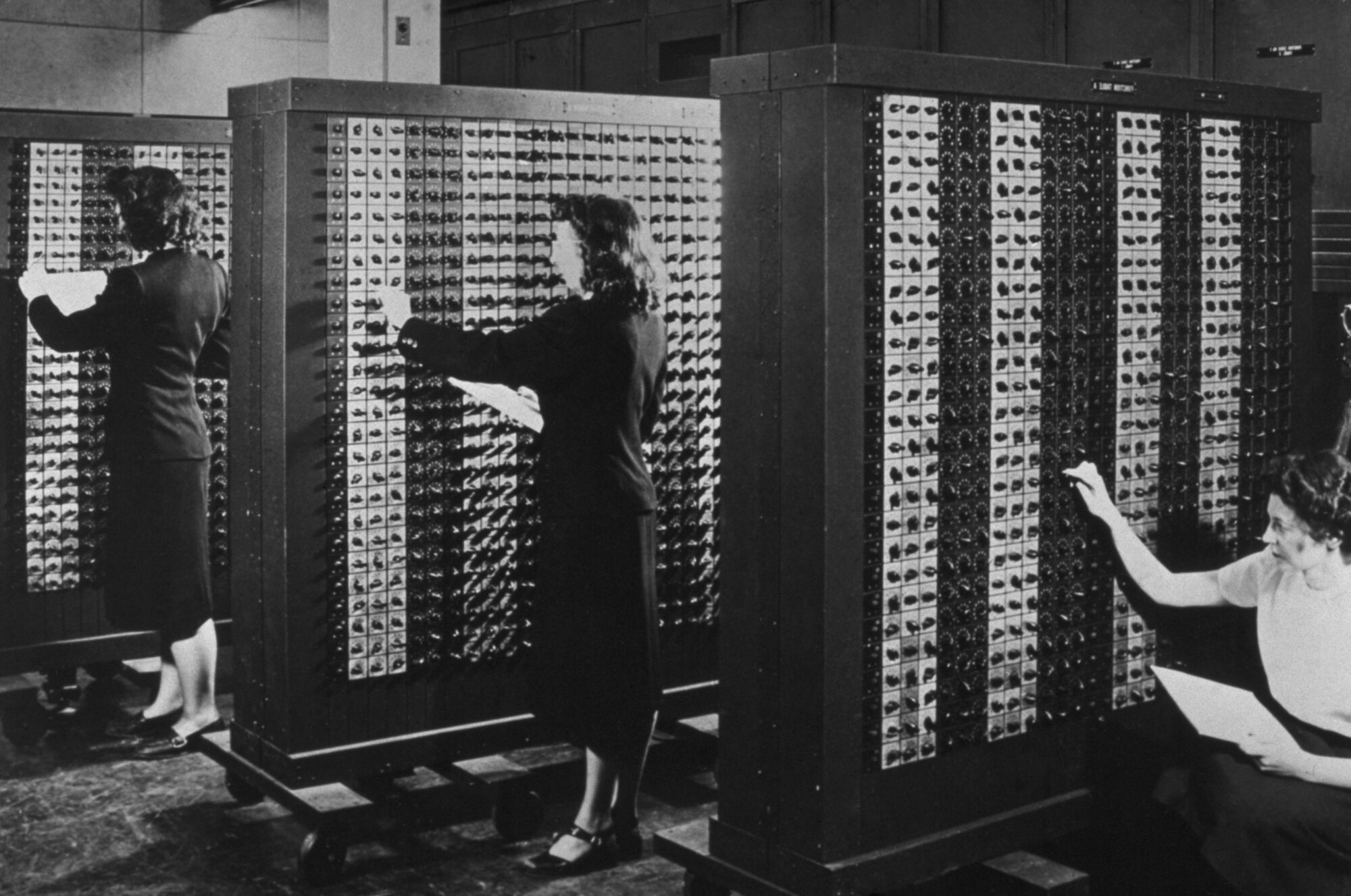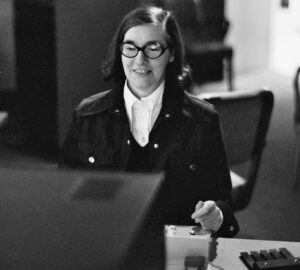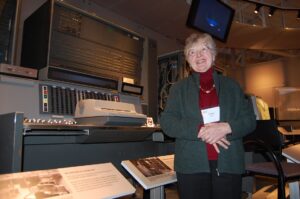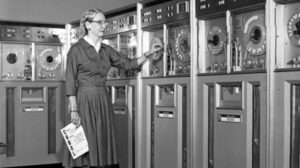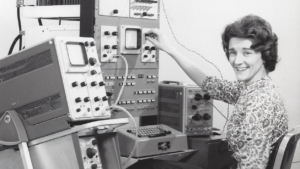March 8th is International Women’s Day (IWD), honoring the achievements of women and promoting women’s rights. This post is a tribute to some women who have been very influential in the computer science and IT industry.
Original name Augusta Ada Byron was born in London. She was a mathematician, an associate of Charles Babbage, for whose prototype of a digital computer she created a program. Due to this, she has been called the first computer programmer.
She was the daughter of the famed poet Lord Byron but never knew him personally. She was educated privately and was helped in her advanced studies by mathematician-logician Augustus De Morgan, the first professor of mathematics at the University of London.
Lovelace became interested in Babbage’s machines as early as 1833 when she was introduced to Babbage by their mutual friend, author Mary Somerville. In 1843 came to translate and annotate an article written by the Italian mathematician and engineer Luigi Federico Menabrea, about Charles Babbage’s Analytical Machine.
Her detailed and elaborate annotations (especially her description of how the proposed Analytical Engine could be programmed to compute Bernoulli numbers) were excellent; “the Analytical Engine,” she said, “weaves algebraic patterns, just as the Jacquard-loom weaves flowers and leaves.”
Babbage only built a small part of the Analytical Engine, but Lovelace’s efforts have been remembered. The early programming language Ada was named for her, and the second Tuesday in October has become Ada Lovelace Day, on which the contributions of women to science, technology, engineering, and mathematics are honored.
Ada Lovelace (1815-1852)
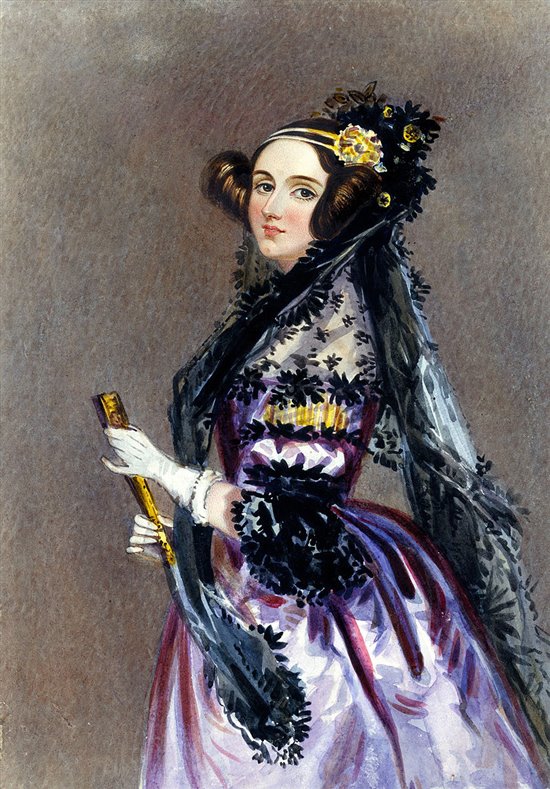
Grace Hopper (1906 - 1922)
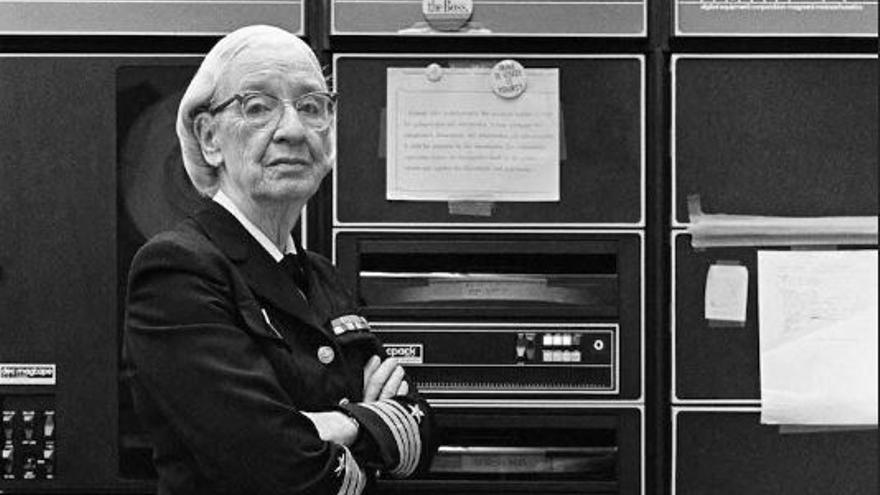
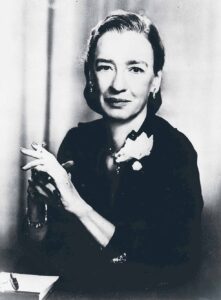
She was a computer pioneer and naval officer. She is best known for her trailblazing contributions to computer programming, software development, and the design and implementation of programming languages.
Grace Hopper was born in New York City. and graduated with degrees in mathematics and physics. She got a master’s degree and a doctorate in mathematics from Yale.
In 1949, Hopper joined a company, which was soon acquired by Remington Rand and then Sperry Rand, which
While working there, Hopper pioneered the idea of automatic programming and explored new ways to use the computer to code. In 1952 she developed the first compiler called A-0, which translated mathematical code into machine-readable code—an important step toward creating modern programming languages.
In 1953, Hopper proposed the idea of writing programs in words, rather than symbols, but she was told her idea would not work. Nevertheless, she continued working on an English-language compiler, and in 1956 her team was running FLOW-MATIC, the first programming language to use word commands. Unlike FORTRAN or MATH-MATIC, which used mathematical symbols, FLOW-MATIC used regular English words and was designed for data processing purposes. She also demonstrated how programs could be written in word-based languages other than English.
In 1959, Hopper took part in the Conference on Data Systems Languages (CODASYL), the goal of which was to develop a common business language that could be used across industries and sectors. The finished product was COBOL, short for “common business-oriented language.” Although many people contributed to this effort, Hopper is widely recognized for her work designing COBOL, developing compilers for it, and encouraging its broad adoption.
Grace Hopper was the recipient of more than forty honorary degrees, and many scholarships, professorships, awards, and conferences are named in her honor.
She was born in New York and is recognized for pioneering contributions to the theory and practice of optimizing compiler techniques that laid the foundation for modern optimizing compilers and automatic parallel execution.
She earned a BA in mathematics with a minor in physics, and later an MA in mathematics.
She joined IBM in 1957, at the same time the FORTRAN programming language had been released. She spent most of the rest of her career developing cutting-edge programming language compilers for IBM Research.
Allen and her team designed a single compiler framework to handle three very different programming languages: FORTRAN, Autocoder, and the new language Alpha. The three language compilers shared a common optimizing back end. This was an extraordinarily ambitious effort for the time.
After this, she worked on different cutting-edge projects, always around compilers. It includes the Advanced Computing Systems project (ACS), the first “superscalar” processor; the Experimental Compiler Systems project (ECS) designed to support multiple programming languages including a new language called PL/I, which presented much more difficult problems for an optimizing compiler and finally the Parallel Translator (PTRAN), a system for compiling Fortran programs not especially written with parallelism in mind for execution on parallel computer architectures.
Allen was named an IBM Fellow in 1989, an IEEE Fellow in 1991, and an ACM Fellow in 1994. During her career, she focused on taking programs as programmers like to write them, and made them run efficiently. Today’s programming language compilers still rely on techniques that she pioneered.
Frances Elizabeth Allen (1932-2020)
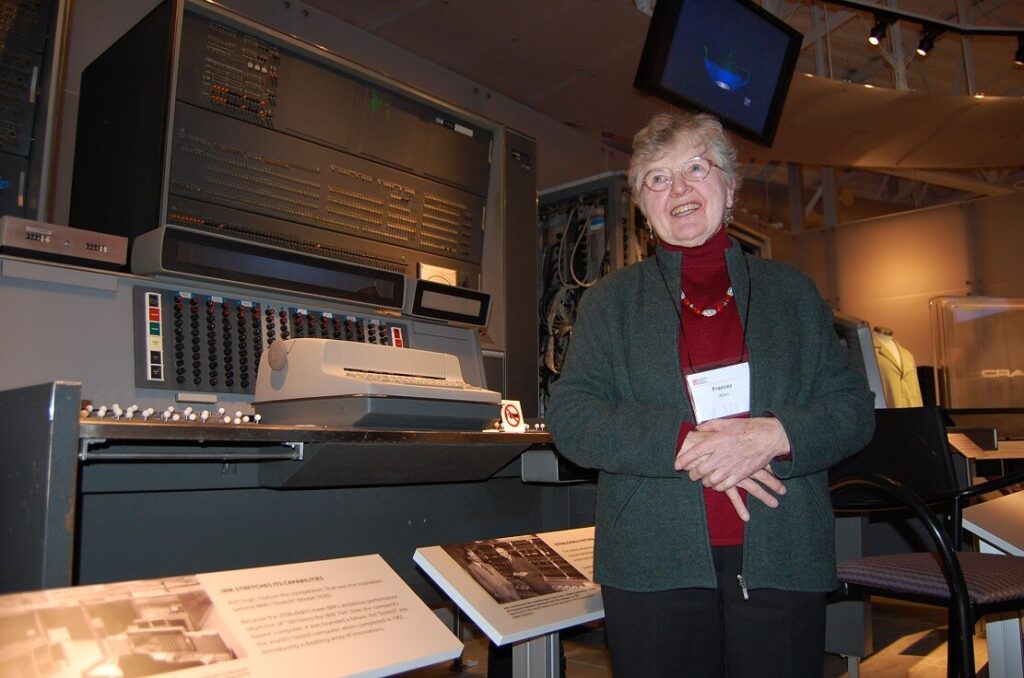

ENIAC programmers

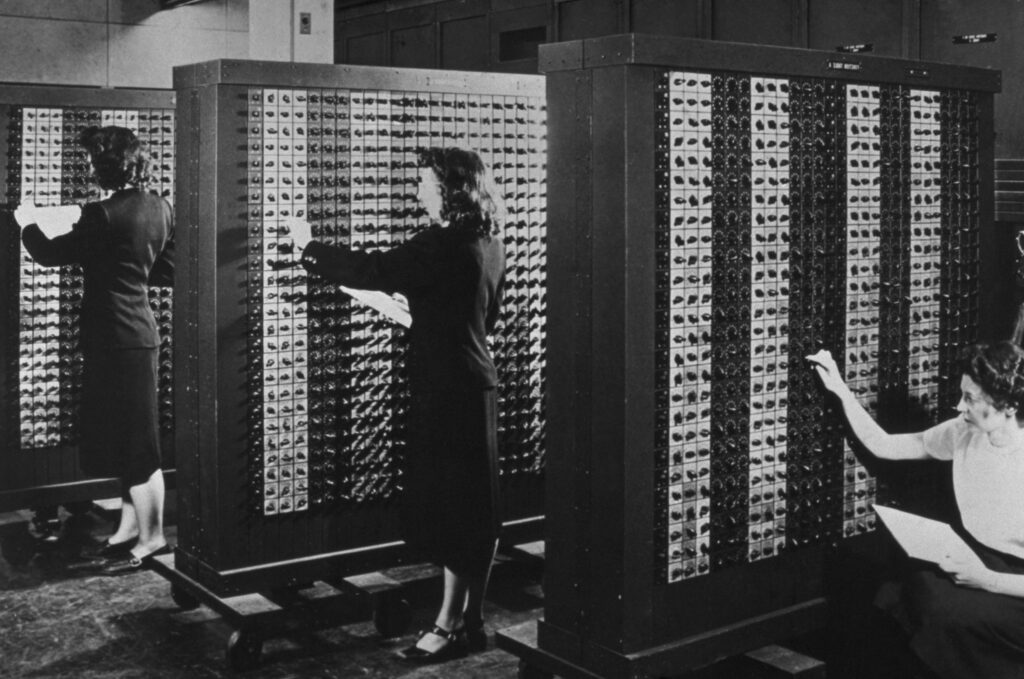


In 1946 six brilliant young women programmed the first all-electronic, programmable computer, the ENIAC, a project run by the U.S. Army in Philadelphia as part of a secret World War II project. They learned to program without programming languages or manuals. By the Demonstration Day arrived in 1946, the ENIAC ran their ballistics trajectory program in seconds, an incredible achievement.!
Yet when the ENIAC was unveiled to the press and the public in 1946, the women were never introduced; they were invisible.
They were:
- Frances Bilas Spence (1922 – 2013)
- Jean Jennings Bartik (1924 – 2011)
- Marlyn Wescoff Meltzer (1922 – 2008)
- Kathleen “Kay” McNulty Mauchly Antonelli (1921 – 2006)
- Frances Elizabeth “Betty” Holberton (1917 – 2001)
- Ruth Lichterman Teitelbaum (1924 – 1986)
What they did was amazing. By the time there was no programming languages. They were all highly trained mathematicians, that had no blueprint to follow when it came to ENIAC. They were given wiring and logical diagrams of the massive machine, and told to figure it out.
The ENIAC contained 40 panels that were each about the size of a commercial refrigerator, lined up in a U-shape, with 18,000 vacuum tubes each.
They had to translate their calculations into steps that the ENIAC could handle, but they also had to literally wire the machine. They had to track each piece of data, wire it into a panel, such as a multiplier or a ‘square rooter,’ and then move the result — physically by wire — to another panel for storage
After ENIAC, they had different achievements:
- Jean Bartik joined the teams that programmed the Binary Automatic Computer (BINAC), and then was in charge of logical design for the UNIVAC, the 1st commercial computer
- Betty Holberton ran the committee that created the programming languages COBOL and FORTRAN
- Kay McNulty was involved in early research that was testing the possibility of a hydrogen bomb
- Ruth Teitelbaum taught programming on the ENIAC when it was relocated to the Maryland
In 1997, the ENIAC Six were inducted into the Women in Technology International Hall of Fame.
She went from being a graduate with a degree in philosophy to the first person to have a personal computer in their home. Born in Chicago she applied and was selected to work at MIT’s Lincoln Laboratory as a programmer.
She was involved in the Laboratory Instrument Computer (LINC) project, considered as one of the first interactive personal/home computer in the world. LINC included a keyboard, graphical user interface (GUI), CRT display, four knobs (serving as a mouse), ports for peripheral devices, and the ability to store data.
She wrote the system’s software, known as LINC Assembly Program (LAP) consisting an assembler and screen editor. Wilkes designed the original operating system and its iterations all the way up to LAP6.
Her focus was on making technology more accessible. She believed the most important demand on the online environment was “user efficiency,” rather than machine efficiency. For this reason, the team designed LAP in what they called “conversational mode.”
She took a sabatical during 1963 and when sher returned, the lab has moved to a different place, where she was not willing to move. So Mary Wilkes had a LINC shipped to her parents’ home, and spent 1964 to 1965 programming the computer, giving her the distinct honor of being one of the first people in the world to have a personal computer in their home, and one of the first working from home.
Later she retired from programming and got a degree in law
Mary Allen Wilkes had a great logical mind but also passion and creativity. These fueled her work.
Mary Allen Wilkes (1937-Present)


Elizabeth Feinler (1937-present)
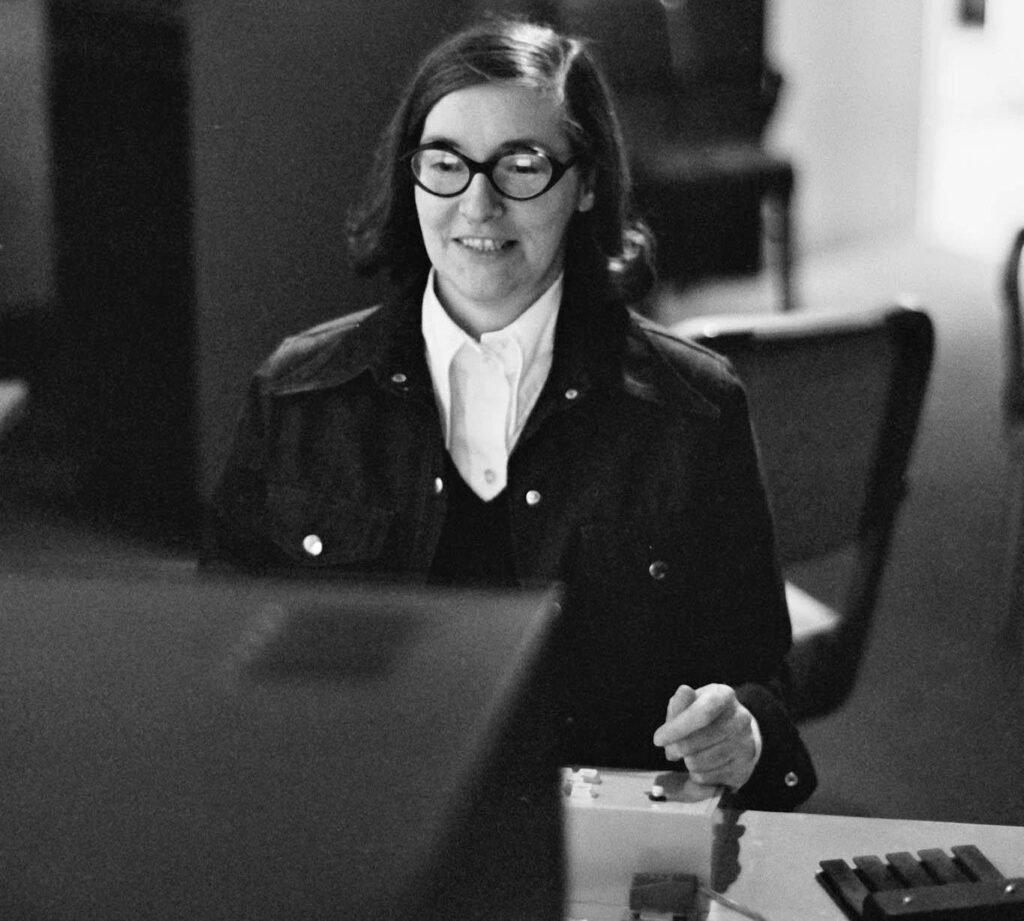
She was born and grew up in West Virginia, wher she graduated with a degree in chemistry.
She joined SRI International in Menlo Park, CA in 1960 as an information scientist heading up the Information Research Department before becoming a member in 1972 of Dr. Douglas Engelbart’s Augmentation Research Center, where she began her work on the Internet. Her early networking effort was carried out on Host 2 of the Internet, where she pioneered and managed first the ARPNET, and then the Defense Data Network. Both of these early networks were the forerunners of today’s Internet.
Her group developed the first Internet “yellow-” and “white-page” servers as well as the first query-based network host name and address (WHOIS) server. They also managed the Host Naming Registry for the Internet from 1972 until 1989. As part of this effort they developed the top-level domain naming scheme of .com, .edu, .gov, .mil, .org, and .net, which are still in use today on the Internet. Her group also developed a program called PCSam that retrieved email from server machines and downloaded it to a user’s personal computer, an early model for today’s email systems.
After leaving SRI she worked as a contractor for NASA helping to bring networking to the large NSF and NASA telescope sites.She also assisted with guidelines for the development and management of the NASA World Wide Web.
Elizabeth Feinler work has been fundamental in what has turned out to be one of the greatest inventions of the modern world – the Internet.
Born Vera Buchthal in Dortmund, Germany, she fled Nazi Europe through the Kindertransport rescue effort orchestrated before the start of WWII and was adopted by foster parents in UK.
She got involved in the computer industry, but hit the glass ceiling many times. That decided her in 1962 to establish her own software enterprise for women, built by women. She and her employees pioneered the idea of women going back into the work force after a career break, and promoted flexible work methods, job sharing, profit-sharing, and company co-ownership.
The work-from-home contract programming company called “Freelance Programmers” eventually employed over 8,500 people. The company grew rapidly and went public in 1996. Ultimately, her company was valued at $3 billion, making millionaires of 70 of her team members.
Shirley’s company was responsible for programming the black box for the supersonic Concorde. She and her employees were also instrumental in helping develop software standards, management control protocols, and other standards that were eventually adopted by NATO.
But she needed to change her name, frome Stephanie to Steve, to become successful. She did it after writing dozens of letters, introducing the company’s services, and getting absolutely no reply whatsoever. Her husband suggested to change Stephanie Shirley to Steve Shirley, and then she began to get some replies.
Stephanie Shirley (1933-Present)

Margaret Hamilton (1936-Present)



Margaret H. Hamilton was born in Paoli, Indiana, and graduated with a bachelor’s in mathematics.
She started working at Massachusetts Institute of Technology (MIT), where she developed weather prediction software.
From 1961-63, Hamilton worked on the massive US SAGE air defense system at Lincoln Laboratories, where she first began to take an interest in software reliability.
During the time of the Apollo space missions, Hamilton led the team that created the on-board flight software for NASA’s Apollo command modules and lunar modules. She was in charge of the Apollo (and Skylab) on-board flight software effort while also serving as Director of the Software Engineering Division at MIT’s Instrumentation Laboratory. During this time at MIT, she wanted to give their software “legitimacy”, just like with other engineering disciplines; and, as a result, she made up the term “software engineering” to distinguish it from other kinds of engineering.
She culminated the Apollo effort by leading her team in performing an empirical analysis based on lessons learned from the development of the Apollo on-board flight software. These lessons were formalized into a theory for systems and software, which serves as the origin and much of the foundation of Hamilton’s Universal Systems Language (USL).
Hamilton is the founder and CEO of Hamilton Technologies, Inc. She is responsible for the development of the Universal Systems Language (USL) together with its integrated systems-to-software “Development Before the Fact” preventative life cycle and its automation, the 001 Tool Suite; all based on her mathematical theory of control for systems and software.
For over five decades, Hamilton’s methods have had a major impact on the field of software engineering up to and including the present day.
Hamilton received the NASA Exceptional Space Act Award (2003) and the Presidential Medal of Freedom awarded by Barack Obama (2016).
This is surely an incomplete list. There are other important names as Jean Sammet, Thelma Estrin, Evelyn Boyd Granville, Dana Ulery, Dorothy Vaughan, Adele Goldberg, and Dr. Anita Borg not included, but the intention is to honor women and their influence on the computer science space.
Sources:
Encyclopaedia Britannica
Yale University
Turing Award
ENIAC Programmers Project – Kathy Kleiman
Internet Hall of Fame
Computer.org
